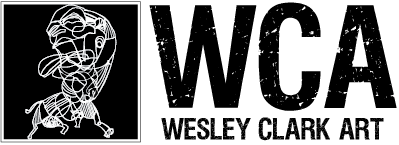The Prophet's Library
Frustration. Hope. Beauty. Pain. Constant trauma with few periods of respite. A Black man convicted and sentence for choking his dog while another police officer is acquitted of all charges after killing an unarmed Black man in need of help. How do Black Americans find their equilibrium in a country that refuses to reconcile with past and present traditions of violence against their skin; assaults against their character; and whom has socialized racism?
Built around a narrative construct of a curated private collection of objects, The Prophet’s Library unabashedly delves into dialogues concerning Black Americans in the only land they’ve known — yet a place hard to call home.
Identity and reparations are two prominent recurring themes. Reparations delineates reconciliation of what is owed Black Americans to be a regular and prominent thought leading toward action in American society. Identity responds to my recognition of how intentionally the Black image has been co-opted & distorted; the devastating effects of those actions; and the need to counter those maneuvers. Each mingles with economics, government, value of life, and history, intertwined and layered throughout the individual works creating a subtle yet well established thread between the objects.
With an expansion into new materials, metal and resin, I’m provided with a material contrast for the wood that suits my subject matter and aids in my narrations. Furthermore, These works directly engage my love for words and their power. When combined, these pieces make for a very literate show; where words take center stage alongside their visual co-stars. (A personal feat, as I’ve been chasing phrases attempting to capture them and convert them fully to imagery.) The phrase, “A picture is worth a thousand words,” holds true, yet my focus here is how a word creates a thousand pictures. With this in mind, I’ve dialed in both elements and fine-tuned their frequencies to coexist, complement, and fuel one another to further reach my audience.
I aim for The Prophet’s Library to be an experience of exhalations for Black American viewers; and to feel comfortable, and comforted when viewing this work. For other viewers I offer a glimpse at the complexity and reality of being a Black American in this country, with the goal of being moved to consider their position in all of the subject matter presented.
My General Practice
Scientists say that every time we recall a memory we are in fact re-creating that memory - altering it, making the memory more self-centered - while history, by some definitions, is the effort to establish a “true memory”. So can a true history exist if no true memory can be made?
This question provides the basis of my aesthetic and use of invented narratives to create fictional artifacts. The narratives I create play a “Question and Answer” role in my process and dictate the markings made. For example, I may ask myself, “Why is the paint peeling off? Was this gouge from an axe or a rock?” The answer, “This object was abandoned in an area that over time became the hangout for groups of teenagers. They harass the paint, throw bottles and rocks at it, marring the surface.” This “Question and Answer” role of narrative guides my aesthetic choices; I weather, distress and ‚”age” the objects as it coincides with the developing narrative. In the context of the gallery, this aesthetic is intended to make the viewer think “antique”, and speculate as to how the object was used, its history and value. However, it is not important that my narrative comes across to the viewer nor am I interested in fooling the viewer into thinking these objects are originals. I simply want to construct objects that viewers imagine as having a history - a history that never existed - while in the context of the gallery.
The foundation of the work is to challenge and draw parallels between historical and contemporary cultural issues. My primary focus surrounds blacks in America and the African Diaspora. I examine the psyche of young black males feeling like a target and being targeted. I question tradition or the lack of tradition and the role it plays on ones values today. Objects that are antiques or antiqued are associated with historical relevance and wealth. By placing these issues in an antiqued object I am establishing the value in furthering a discussion around a particular issue. Analyzing historic and present social and economic disparities are what shape my conceptual process.
Consideration of materials occurs as I invent the object’s life and history. The materials are selected as a means to tell the story and chosen for their accessibility and workability. New materials, such as plywood, clue the viewer in to the modernity of the work and that they are on stage. These material clues support a fictitious narrative prompting the viewer to work through their own invented narrative.
In Flux
In Flux, was created as meditation on our changing times. At the time of its conception, the country was in the throws of a vast pendulum swing from one extreme to another politically and socially. In Flux is a snapshot of components of thoughts and patterns as a shift takes place. As one perception or ideal breaks down, another one is being formed. This visual representation of reconfiguration or realignment of thoughts and ideas can be applied socially or personally. On a social level we can compare it to the shifting political landscape; thoughts around confederate statues, or sexual misconduct in the workplace — all things that have begun to reposition people and their understandings of various issues. Similarly, this work exists on a personal level. As we are introduced to various perspectives or experiences we reconfigure the structure of our thoughts. This idea of continuous change is evident even as the ambient lighting shifts and the work reflects its surroundings, taking on new tones and shades; bringing forth a new reality.
